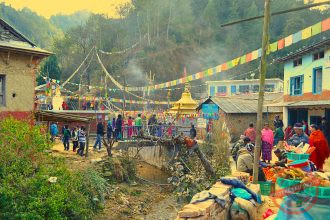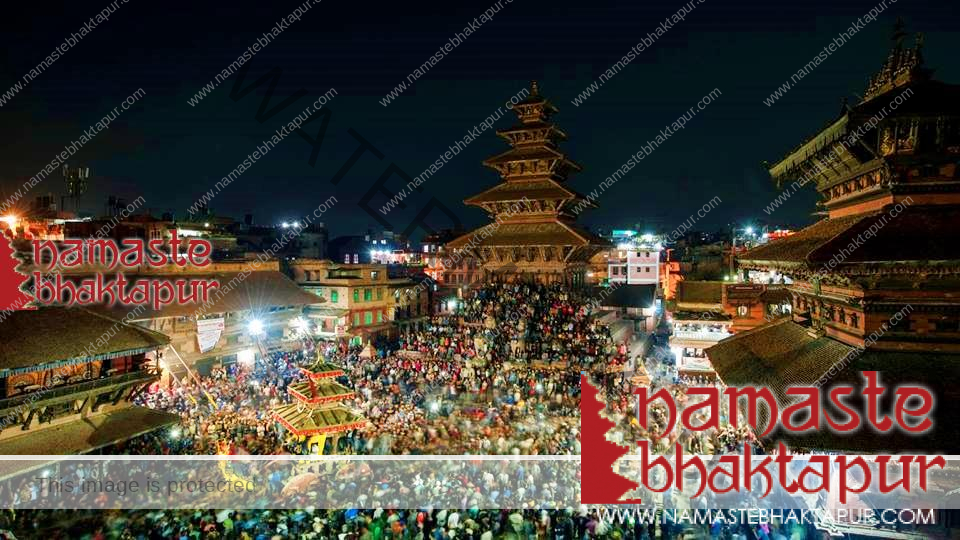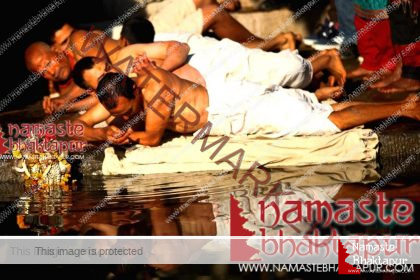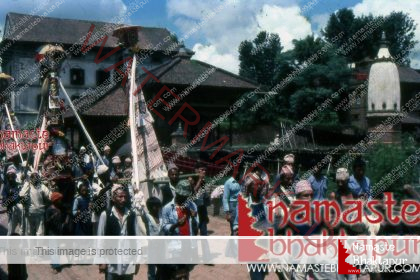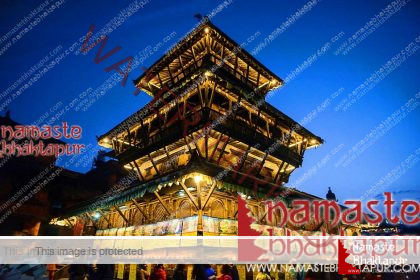From Asar Krishna Ashtami, i.e. Bhalbhal Ashtami (Bhagasti), through Shravan Shukla Chaturdashi, the artists who engage in the dance come from the same Navdurga Dev Gana On the day of Gathemagah, the Navdurga Dev Gana’s lifeline begins (Shravan Shukla Ashtami). All of Navdurga Dev Gana‘s rituals are performed, just as there are 16 rituals in a person’s life. Navdurga Dev Gana has been performing cultural dances in every toles in Bhaktapur for the past 11 months.
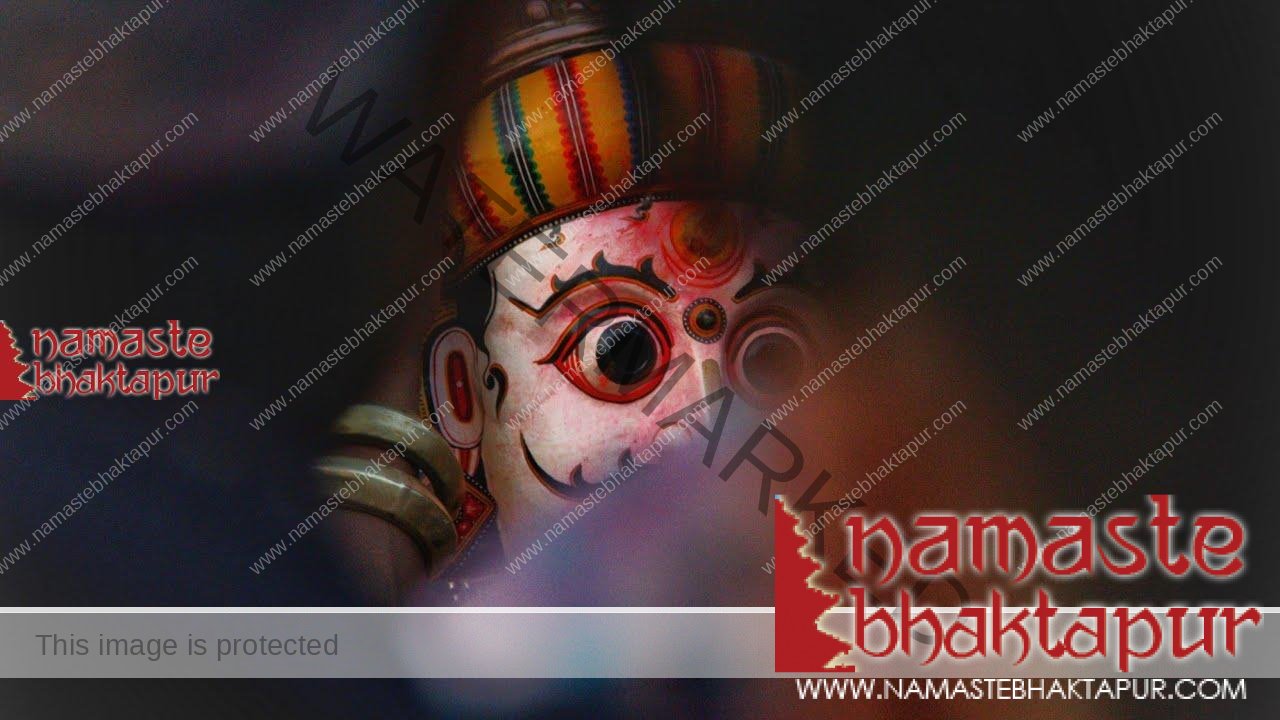
Why is Ashtami a better immersion option?
Navadurga‘s immersion in Bhalbhal Ashtami (Bhagasti) is a tradition-bound ceremony. According to experts, it is not based on any traditional beliefs. The immersion of Navadurga Dev Gana has begun on this day, according to cultural expert Binod Raj Sharma (Rajopadhyaya), since the river of Bhaktapur will be inundated on the day of Bhalbhal Ashtami (Bhagasti), and the river will be cleansed after the waste accumulated in the river is carried away by the flood. “The purer the river becomes, the faster it flows,” Sharma explained.
On the day of Jeshtha Shukla Shashthi, i.e. Sithi Nakha, Nava Durga performs her final dance at Ichchhu Tole. On the same day, it is traditional to return (deactivate) the mantra-karma implanted in the mask Devotees believe that as soon as the mantra is returned, life is snatched from Nava Durga’s mask. It is believed that the mantra of Nava Durga is returned to Ichchhu Tole. But it was not possible to return the mantra. So it is customary to return karma. Just like when we give life to any idol, it becomes God. In the same way, it is believed that karma returns after losing that life, ”said Sharma. There is no rite from Sithi Nakha to Bhalbhal Ashtami (Bhagasti).At Ichchhu Tole Nava Durga does her final dance. The temple is home to the members of that gang. At the time, it was thought that every devotee should pay a visit to the Devi temple at least once.
The word Bhalbhal Ashtami (Bhagasti)comes from Sanskrit. According to experts, this Ashtami is known as Bhalbhal Ashtami (Bhagasti)because it creates a loud noise as water rushes through the river. By twisting the word Bhalbhalastami, which is used in the treaty, this Ashtami is named Bhagashti in Newari. As a result, it is usual to finish Nava Durga’s life cycle on Bhagashti which began on Gathemagha. Before Nava Durga‘s immersion on Ashtami, all Nava Durga groups go around the city once in the rhythm of Gana Baja. On this day, the instrument played has a different rhythm than on previous days. Throughout his life, the Navadurga Gana performed dances in every tole of Bhaktapur. In each tole, rites are done independently.16 ritual rites are conducted over the course of 11 months, and half of Sifa Dyo‘s idol, Mahalakshmi, is destroyed together with Nava Durga. The jewels inside, however, are not damaged.
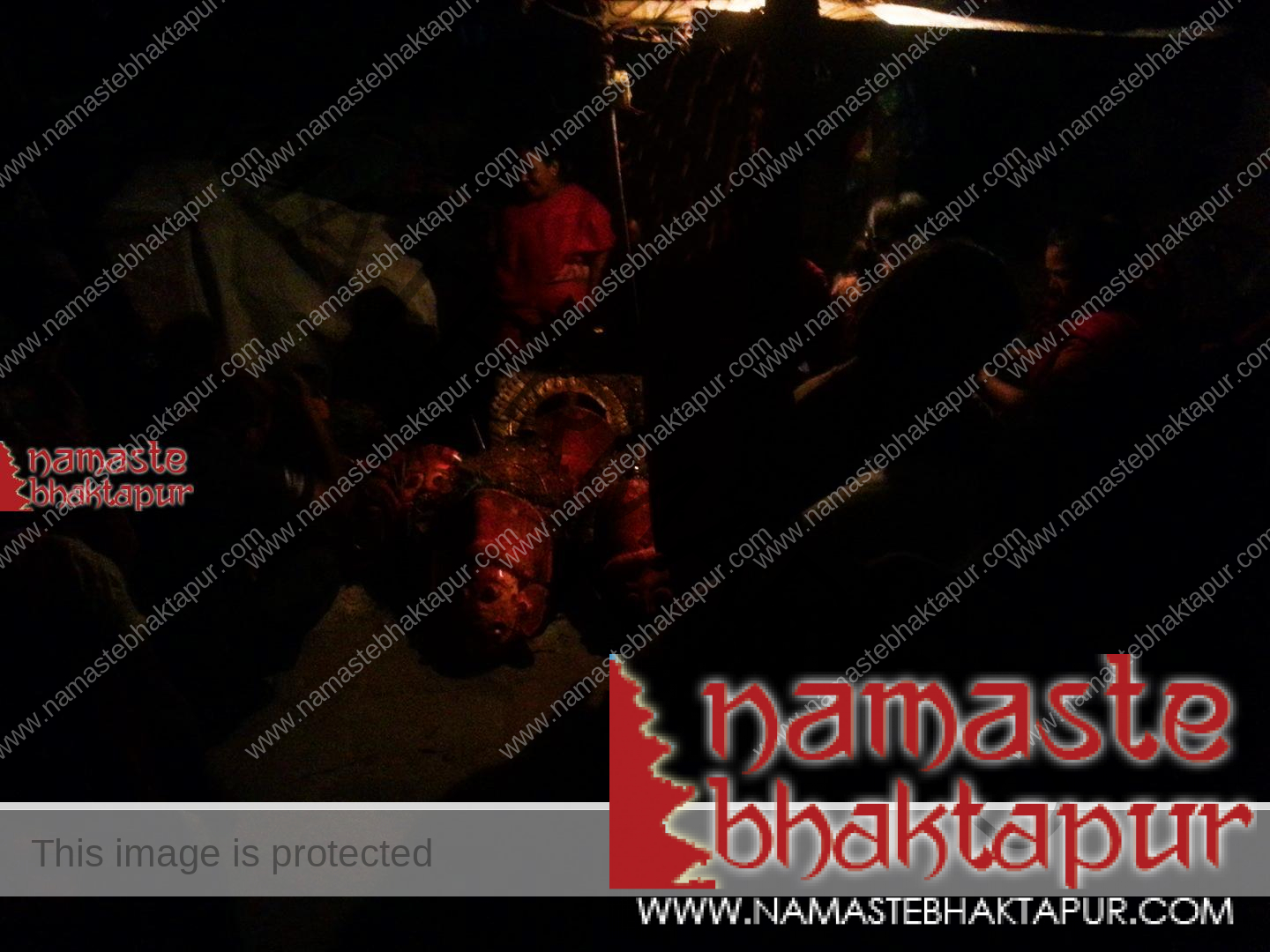
In the goddess’s temple, there is a silver idol. Mahalakshmi‘s idol looks like this. It is usual to place an urn in front of it. The Navdurga Gana is properly immersed when the urn is submerged in Hanuman Ghat. Fish is also thought to be preserved in the urn. A separate symbol is the fish in the urn. The five elements are absorbed by the body in the same way as a fish disappears into the water. It is usual to bury all of the crowns used in the dance, as well as the urn, in the same way that the people are. In which the guy portraying Bhairav in Navdurga distributes Dagbatti to all 12 mask. Even if the crown is burned, the jewelry and clothing are spared. After returning from the Ghat, Bhairav performs all the ceremonies of the crown. After the last rites, no group of Nava Durga will be allowed to enter the temple. Then the gods have time.

